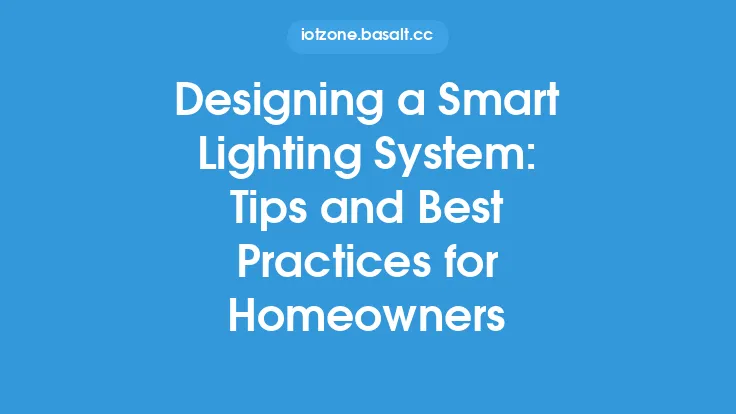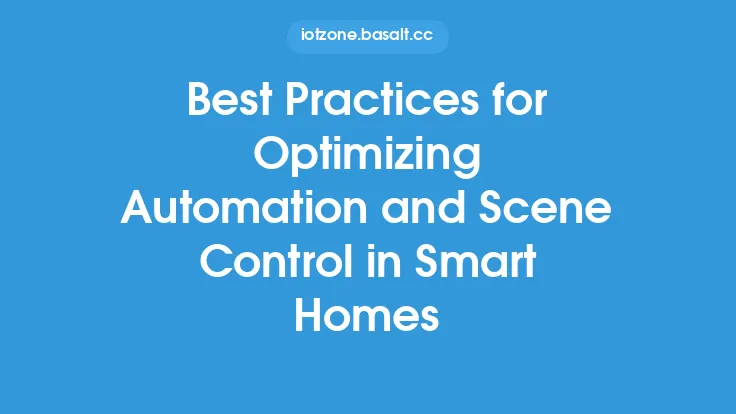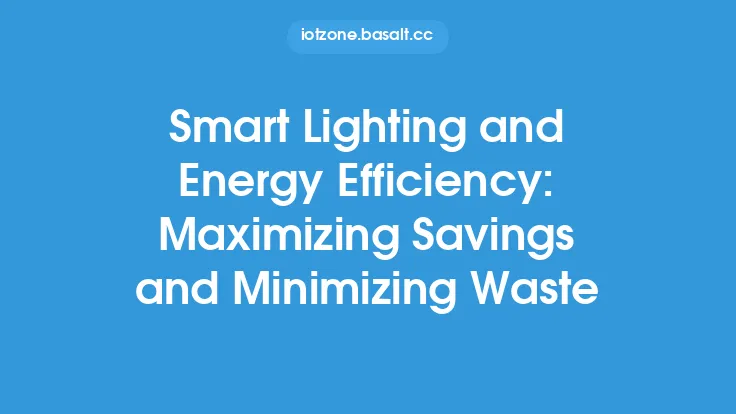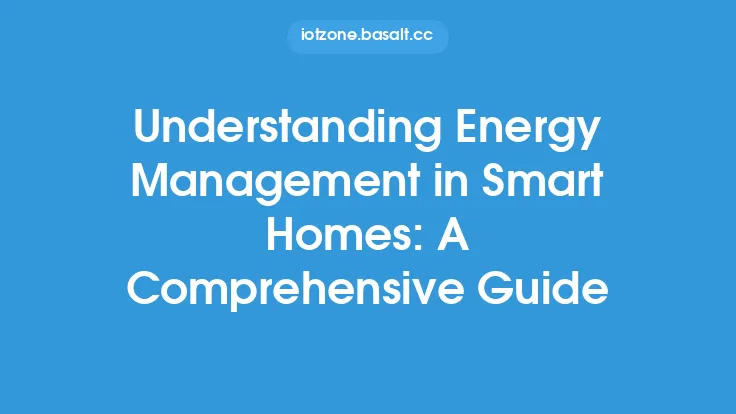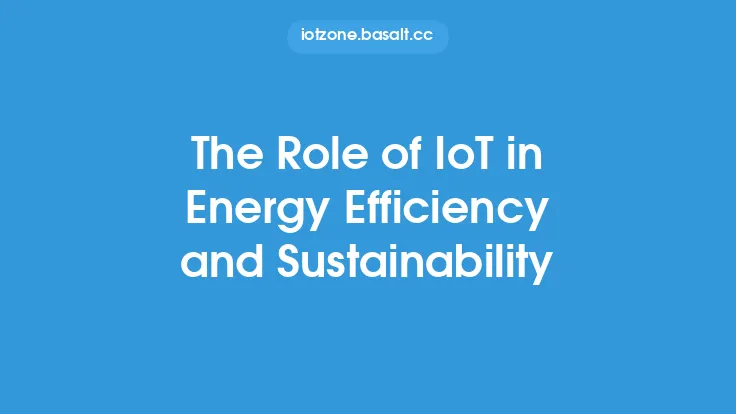As the world becomes increasingly aware of the importance of energy conservation, smart home automation has emerged as a key player in reducing energy consumption and promoting sustainability. One of the most significant benefits of smart home automation is its ability to optimize energy efficiency, which can lead to significant cost savings and a reduced carbon footprint. In this article, we will explore the tips and best practices for achieving energy efficiency in smart homes, with a focus on the technical aspects of energy management and monitoring.
Introduction to Energy Efficiency in Smart Homes
Energy efficiency in smart homes refers to the use of advanced technologies and strategies to minimize energy waste and optimize energy consumption. This can be achieved through the use of smart devices, sensors, and automation systems that can monitor and control energy usage in real-time. By leveraging these technologies, homeowners can reduce their energy consumption, lower their utility bills, and contribute to a more sustainable future.
Understanding Energy Consumption Patterns
To achieve energy efficiency in smart homes, it is essential to understand energy consumption patterns. This involves monitoring and analyzing energy usage in different parts of the home, including lighting, heating and cooling, appliances, and electronics. By identifying areas of high energy consumption, homeowners can take targeted measures to reduce waste and optimize energy usage. This can be achieved through the use of energy monitoring systems, which can provide real-time data on energy consumption and help homeowners identify opportunities for energy savings.
Smart Devices and Energy Efficiency
Smart devices play a critical role in achieving energy efficiency in smart homes. These devices can be controlled remotely and can be programmed to optimize energy usage based on occupancy, time of day, and other factors. Some examples of smart devices that can contribute to energy efficiency include:
- Smart thermostats: These devices can learn a home's temperature preferences and adjust the temperature accordingly to minimize energy waste.
- Smart lighting systems: These systems can be programmed to turn off lights when not in use and adjust brightness levels based on natural light availability.
- Smart plugs: These devices can be used to control and monitor energy usage of individual appliances and electronics.
Energy Management Systems
Energy management systems (EMS) are advanced software platforms that can monitor and control energy usage in smart homes. These systems can provide real-time data on energy consumption, identify areas of energy waste, and optimize energy usage based on occupancy, time of day, and other factors. EMS can also integrate with smart devices and other systems to provide a comprehensive energy management solution.
Best Practices for Energy Efficiency
To achieve energy efficiency in smart homes, homeowners can follow several best practices, including:
- Conducting regular energy audits to identify areas of energy waste
- Using energy-efficient lighting and appliances
- Adjusting thermostat settings to optimize heating and cooling
- Using power strips to eliminate standby power consumption
- Implementing smart home automation systems to optimize energy usage
Technical Considerations
From a technical perspective, achieving energy efficiency in smart homes requires careful consideration of several factors, including:
- Network architecture: The network architecture of a smart home system can have a significant impact on energy efficiency. A well-designed network can help reduce energy consumption by minimizing data transmission and processing.
- Device interoperability: Device interoperability is critical to achieving energy efficiency in smart homes. Devices from different manufacturers must be able to communicate with each other seamlessly to optimize energy usage.
- Data analytics: Data analytics plays a critical role in energy efficiency, as it can help homeowners identify areas of energy waste and optimize energy usage. Advanced data analytics algorithms can be used to analyze energy consumption patterns and provide personalized recommendations for energy savings.
Conclusion
Energy efficiency is a critical aspect of smart home automation, and achieving it requires a combination of technical expertise, smart devices, and best practices. By understanding energy consumption patterns, using smart devices, and implementing energy management systems, homeowners can reduce their energy consumption, lower their utility bills, and contribute to a more sustainable future. As the smart home industry continues to evolve, we can expect to see even more innovative solutions for energy efficiency, including advanced data analytics, artificial intelligence, and IoT-based technologies. By staying informed and up-to-date on the latest trends and technologies, homeowners can optimize their energy usage and create a more sustainable and energy-efficient smart home.
